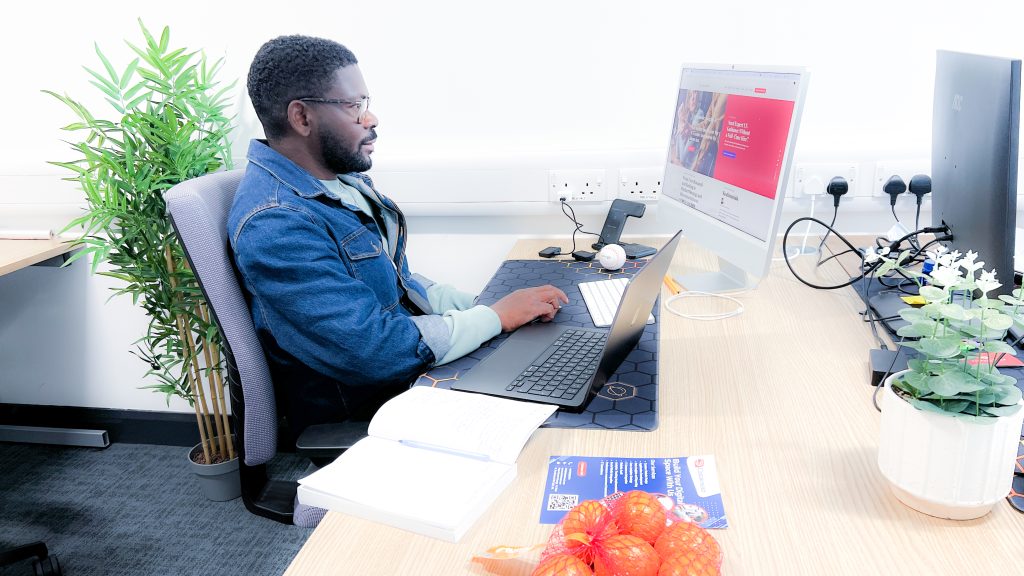
Boosting engagement and conversion is crucial for any business looking to thrive in today’s competitive digital world.
As user experience (UX) consultants, we understand that creating an engaging and seamless experience for users is key to not only attracting them but also converting their interest into meaningful actions. In this guide, we will delve into 10 essential strategies designed to elevate user engagement and enhance conversion rates.
From optimising website navigation and utilizing compelling calls-to-action, to personalizing user experiences and leveraging social proof, these strategies will equip you with the tools needed to create a user-centric environment that drives success.
Let’s explore how these techniques can transform your digital presence and foster deeper connections with your audience.
Before delving into strategies, it’s crucial to grasp what user experience entails. At its core, user experience refers to how a user interacts with and experiences a product, system, or service.
This encompasses everything from the interface design and usability to the overall satisfaction derived from the interaction. By prioritizing user experience, businesses can create environments where users feel valued and engaged, which directly influences their willingness to convert.
As the world is today, responsive design is no longer a luxury but a necessity. Users access content from various devices, including smartphones, tablets, and desktops. A key component of enhancing user experience is ensuring that your website or application functions seamlessly across all these devices.
A responsive design adapts to the screen size and orientation, providing a consistent and intuitive experience regardless of how users choose to engage. This flexibility not only improves user experience but also boosts conversion rates by making it easier for users to navigate and complete desired actions.
Navigational ease is a cornerstone of a positive user experience. Users should be able to find what they are looking for quickly and without frustration. Implementing clear, straightforward navigation aids in this endeavor.
This can be achieved through logical menu structures, prominently placed search bars, and breadcrumbs that show users their path through the site. An intuitive navigation system enhances user experience by reducing the cognitive load on users, leading to higher engagement and conversion rates.
When it comes to UX and online activities, speed is everything. Research consistently shows that users abandon websites that take too long to load. Thus, optimizing your site’s speed and performance is paramount.
This can be achieved through techniques such as compressing images, minimizing HTTP requests, and leveraging browser caching. A faster website not only improves user experience but also contributes to better search engine rankings, which can drive more traffic and, ultimately, more conversions.
A minimalist design approach can significantly enhance user experience by reducing clutter and focusing on essential elements. Clean, simple designs make it easier for users to navigate and absorb content, thereby reducing distractions and improving engagement.
Elements such as ample white space, limited color palettes, and simple typography can create a visually appealing and user-friendly interface. This streamlined approach enhances user experience by making interactions more intuitive and less overwhelming, leading to higher conversion rates.
Personalisation is a powerful tool in enhancing user experience. By tailoring content, recommendations, and interactions to individual users, businesses can create a more engaging and relevant experience.
This can be achieved through data-driven insights into user behavior, preferences, and past interactions. For example, personalized product recommendations or content suggestions can significantly improve user experience by showing users that you understand their needs and interests, which in turn fosters loyalty and increases conversions.
Effective CTAs are critical in guiding users towards desired actions. They should be clear, compelling, and well-placed within the interface. A strong CTA enhances user experience by providing a clear pathway to conversion. For instance, a “Buy Now” button should stand out visually and be placed strategically within the user journey.
Testing different CTA designs, colors, and placements can reveal what resonates best with your audience, thereby improving engagement and boosting conversion rates.
Feedback is a vital component of an evolving user experience strategy. Implementing mechanisms to gather user feedback, such as surveys, feedback forms, or usability testing, provides valuable insights into what users think about their interactions.
Analysing this feedback can highlight areas for improvement and innovation, allowing you to refine and enhance the user experience continuously. Responding to user feedback not only improves the user experience but also shows users that their opinions are valued, which can foster greater engagement and loyalty.
Accessibility is an essential aspect of user experience that ensures all users, including those with disabilities, can interact with your website or application. This involves designing interfaces that are usable by people with various impairments, such as visual, auditory, or cognitive disabilities.
Implementing features like keyboard navigation, screen reader compatibility, and high-contrast color schemes can enhance user experience for a broader audience. By prioritizing accessibility, you not only comply with legal requirements but also expand your reach and foster an inclusive environment that can boost engagement and conversion.
Stale or outdated content can negatively impact user experience by making your site appear neglected and not engaging. Regularly updating your content keeps it fresh and relevant, which can entice users to return and stay longer.
This can involve adding new blog posts, updating product information, or refreshing visual elements. Keeping content up-to-date enhances user experience by providing users with current information and maintaining their interest, which is essential for driving engagement and conversion.
Enhancing user experience is not about implementing one or two isolated tactics but rather about integrating a cohesive strategy that encompasses multiple facets of interaction. By prioritising responsive design, intuitive navigation, speed, minimalism, personalization, effective CTAs, user feedback, accessibility, and regular content updates, you create a holistic approach that significantly boosts engagement and conversion. Each strategy complements the others, creating a synergistic effect that elevates the overall user experience.
Remember, the heart of user experience lies in understanding and catering to the needs and preferences of your users. By continuously evolving your approach based on feedback and industry trends, you can stay ahead of the curve and create a digital environment where users feel valued, engaged, and motivated to convert. Unlocking the potential of user experience is not just about improving metrics; it’s about building meaningful connections with your users that drive long-term success.
In a nutshell, focusing on user experience transforms how users interact with your digital platform, making it more engaging and conversion-friendly. Embrace these strategies, refine them to suit your specific audience, and watch as your engagement and conversion rates soar.




